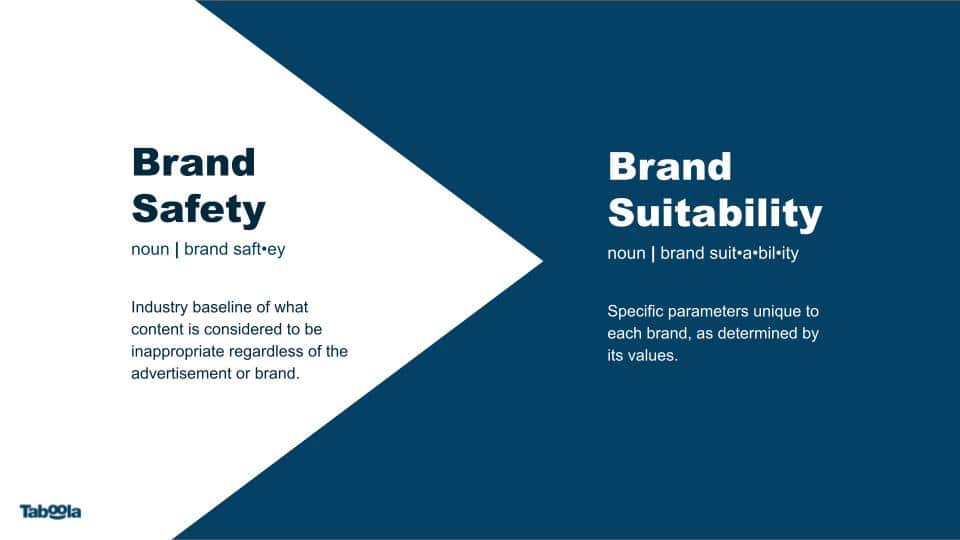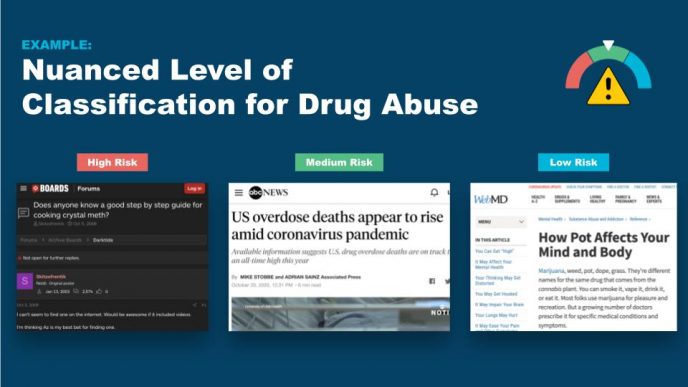Let’s face it: brand safety has and continues to be a hot topic for our industry, understandably.
Marketers don’t want ads to show up in controversial placements and publishers equally want to ensure the ads on their site offer a premium and enjoyable experience for readers.
Fortunately, there are a variety of companies that have emerged – like our partners DoubleVerify and IAS – which make the internet a safer place for the entire ecosystem. So, when all of these trusted partners are aligned in this notion of shifting from brand safety to brand suitability, it’s important those in the digital ecosystem understand why.
So, what is brand suitability? How does it make for a better brand safety experience? How can you transition from brand safety to brand suitability at your company?
Before we dive into these questions, let’s first quickly recap how we got here.
The Rise In Brand Safety Concerns
Digital advertising has innovated quicker than any other form of advertising. We saw brands enjoy the ability to reach audiences more quickly, easily, and affordably than ever before — all while being able to measure results in new and effective ways.
Ad tech platforms emerged swiftly to make the process of buying and selling online more efficient and easier – like the introduction of RTB (real time bidding). New technologies focused on targeting which thought about the intended audience of the ad and not the context of the ad. This eventually exposed many brands to safety risks that range from mild to catastrophic; In fact, a 2017 study by GumGum showed that two-thirds of all brands had been exposed to brand safety risks.
Brands knew they needed to take control and many responded with a “sledgehammer” approach, broadly overblocking categories, sites, and common keywords in an attempt to protect their reputation.
But overblocking often does more harm than good.
Why Brands Can’t Afford to Overblock
Overblocking isn’t the best path forward for brands that want to maximize their performance potential. In this one-size-fits-all approach, brands have a miles-long negative keyword list and this causes two major issues:
- Brands completely avoid valuable placements, like credible news publishers, penalizing legitimate content and leading to their ads being shown on content that is “safe” but low quality.
- Ineffective keyword blocking can obstruct ads from reaching new and relevant consumers, making it harder for advertisers to find audiences and engagement.

So, how can brands balance protection with performance? The key lies in brand suitability: the notion that brands need to think not only about who they are reaching, but also how they are reaching them and in what context.
Let’s look at what brand suitability is, how it makes for a better brand safety experience, and how you can transition from brand safety to brand suitability at your company.
How to Shift From Brand Safety to Brand Suitability
Here’s the hard truth: we’ve had a turbulent year (or two), but brands can’t just sit back and wait for things to calm down. It’s time to adapt, evolve, and shift to brand suitability.
Industry bodies like the American Association of Advertising Agencies (4 A’s) and Global Alliance for Responsible Media (GARM) have developed the first-ever standard for defining brand safety.
This is a phenomenal first step — we now have an industry baseline of what’s considered to be inappropriate for any advertiser, regardless of the advertisement or brand.
But the next step forward is brand suitability and the need to pioneer solutions that let brands consider context and environment in addition to content topics.
Brand suitability answers the question: “Is this the right type of experience for my brand and my values?”

Companies should ask themselves:
- What are my brand’s values?
- How do we feel about current events happening in the news?
- How do we want to represent these values to consumers?
- What beliefs do we want to make known to the public?
- How do these values need to show up in my media plan?
Tiering Categories By Risk
DoubleVerify’s Brand Suitability Tiers are a great example of tools that can effectively classify context and allow brands to align to suitability standards that work for them.
This enables a shift away from binary keyword blocking, so brands can run at scale and drive outcomes while remaining in suitable environments.

Source: DoubleVerify
Here are three real-world examples where we can see the classification system applied to publisher articles. This lets advertisers choose their own risk tolerance or acceptance profile.

Source: DoubleVerify
Addressing Nuance and Brand Specificity
Unlike the overblocking approach of legacy tools and strategies, brand suitability is nuanced and ongoing. It’s about balancing reach and precision according to a brand’s own unique values, goals, and requirements.
Consider this article on low-calorie alcohol.

The post is likely unsuitable to a family-friendly consumer packaged goods (CPG) brand. But to a fitness-focused lifestyle brand, this content may be a perfect way to reach consumers with shared interests.
Trusting the Open Web, News Sites, and Your Partners
In addition to shifting from brand safety to brand suitability, companies should also put more trust into the open web and news sites.
According to HootSuite, people spend 25% of their time reading editorial content on the open web.
And according to IAB, 84% of consumers said that they have increased or maintained trust for brands that advertise on trusted news sources.
These are safe and well-regarded places for advertisers to be, as long as advertisers choose credible, premium publisher partners.
- Here are a few “checkpoints” for choosing the right partners:
- Can you have a conversation with them?
- Are they transparent?
- Do they have direct access to publishers?
- Can they respect your brand safety and suitability needs?
- Will that work with you on solutions?
In order for brands to be successful, they need to have open conversations at every step of the value chain — from publishers to supply-side platforms (SSPs) to demand-side platforms (DSPs) to the verification partners within these tools, then back to agencies and marketers themselves. They need to have ongoing, nuanced conversations about brand values, risk tolerance, and how all the pieces fit together.
The brands that see the most success in 2021 and beyond will be the ones that strike a balance between leaning into new business opportunities vs. leaning back in fear of a negative reaction.